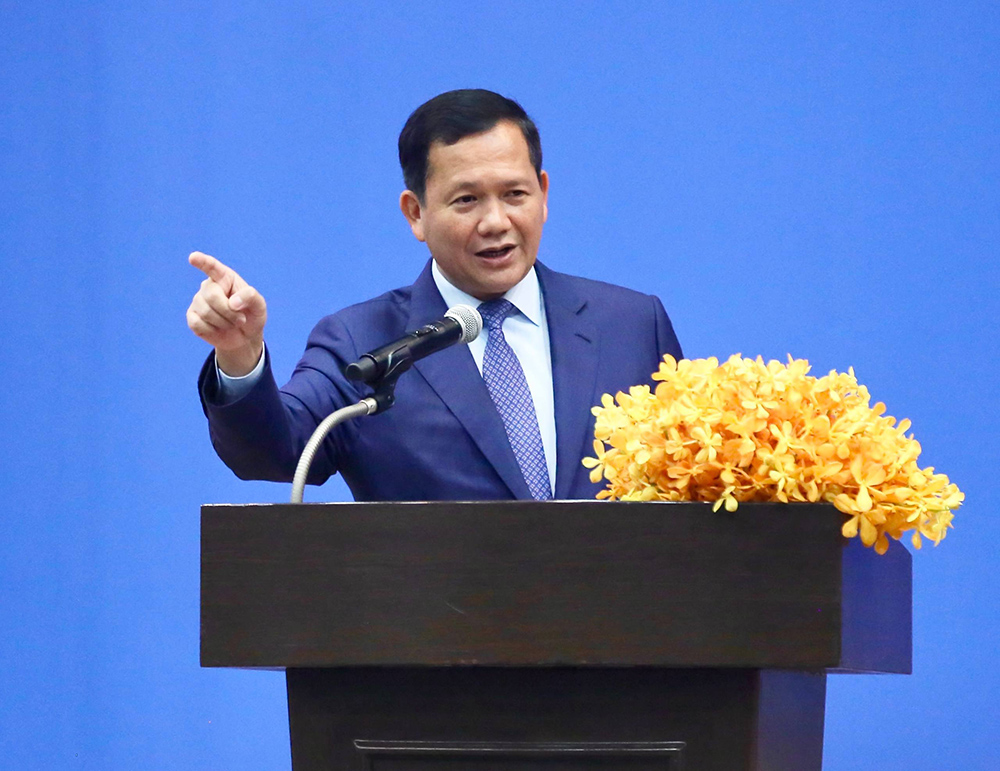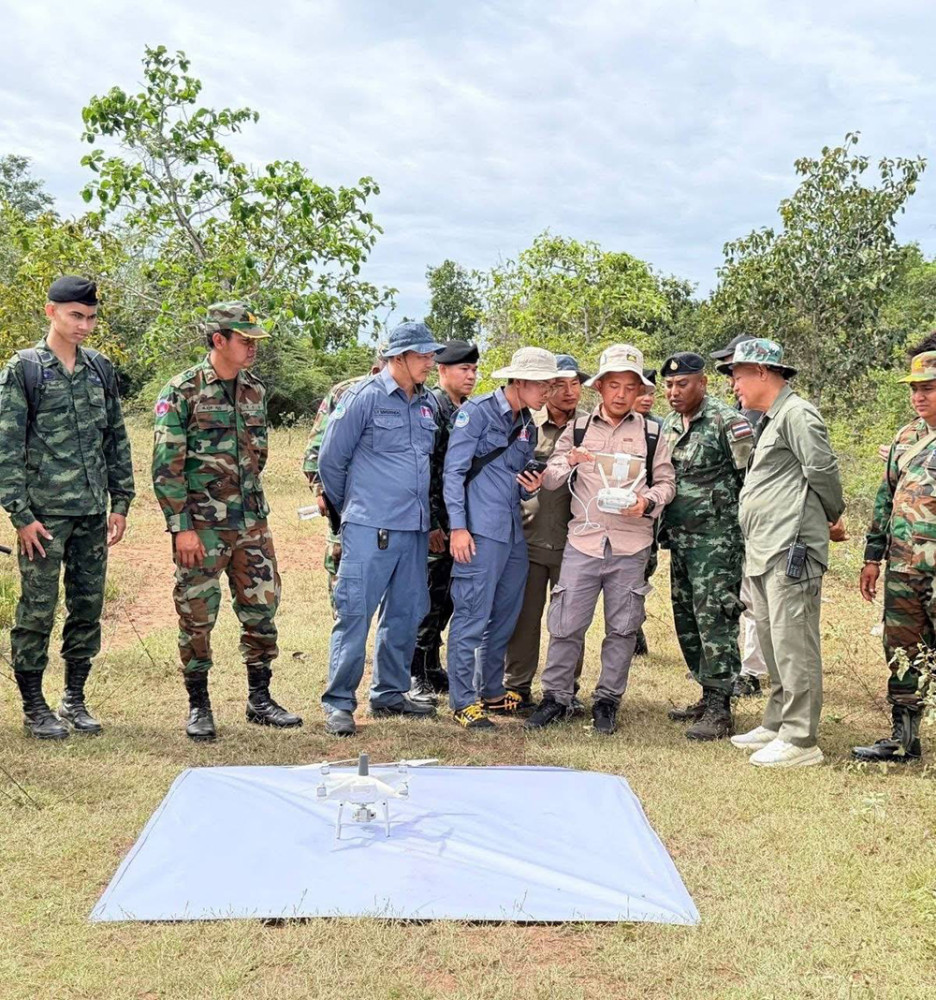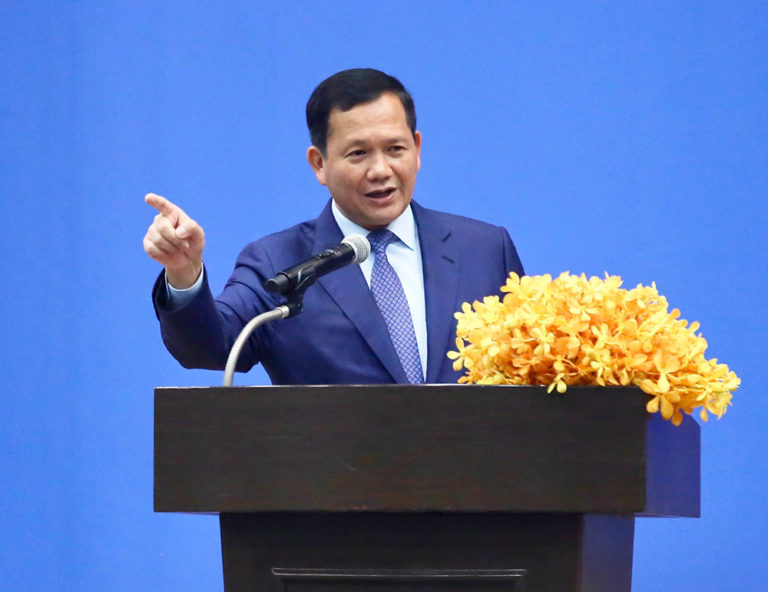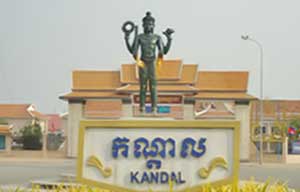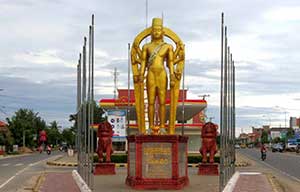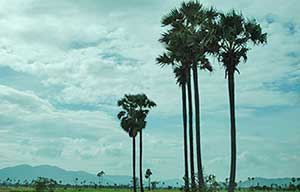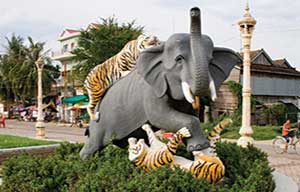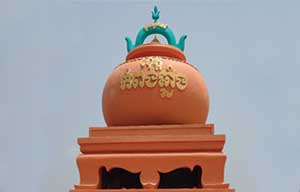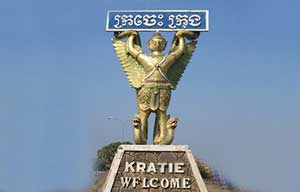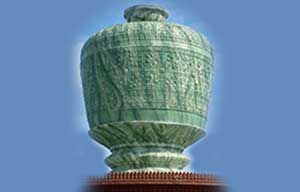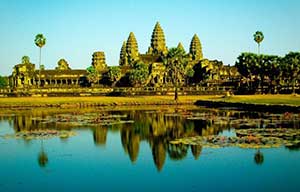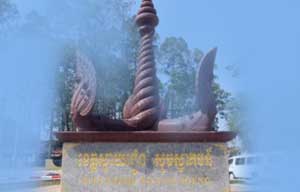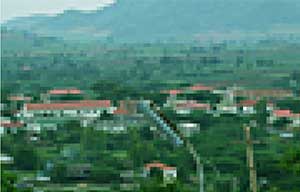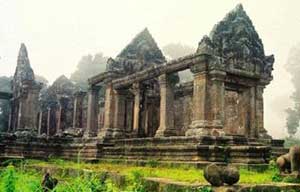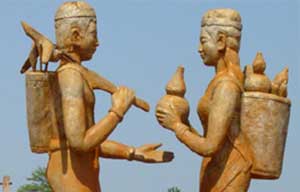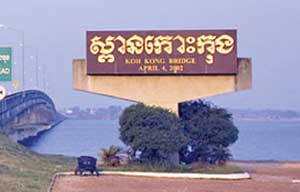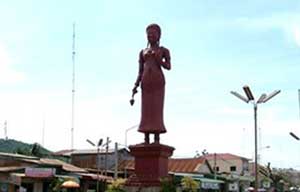Prime Minister Samdech Moha Borvor Thipadei Hun Manet reaffirmed this morning that the Royal Government of Cambodia (RGC) and the Joint Boundary Commission (JBC) of Cambodia have always handled border matters with the highest level of professional conscience and responsibility, prioritising national interest, especially the protection of Cambodia’s territorial integrity and sovereignty.
He stressed that the RGC and JBC strictly adhere to international law, the principle of the invariable nature of borders, and the Cambodia-Thailand international boundary line established by the Commission of Delimitation between Indochina and Siam.
“The border issue is a complex matter inherited from hundreds of years ago, which both countries must resolve together so that people along the border can live peacefully in the long term,” he said, reiterating the RGC’s commitment to seeking a just and lasting solution to problems such as those experienced in Chouk Chey and Prey Chan villages, enabling residents to resume normal living conditions without prolonged uncertainty.
Samdech Thipadei underscored that such solutions cannot be achieved through violence or the use of armed forces. Only peaceful measures in accordance with existing treaties, conventions, and bilateral agreements can deliver meaningful progress.
In line with agreements reached by the Cambodia-Thailand JBC, both sides have decided to dispatch joint survey teams to conduct surveying and install temporary border markers along the border sections between markers 42-47 in Banteay Meanchey province and 52-59 in Battambang province.
He noted observing a significant amount of public discussion, questions, and concerns on social media regarding the survey and temporary border demarcation in these sections.
“I would like to emphasise that the survey and installation of temporary border markers is not a new mission. It is a continuation of the technical work that the border working groups of both countries have been undertaking together for nearly 20 years,” he said.
The State Secretariat of Border Affairs recently confirmed that, since 2006, joint survey teams have worked to verify the exact locations of the 74 concrete border markers erected by the Commission of Delimitation between Indochina and Siam between 1919 and 1920.
While previous efforts focused on identifying the precise positions of markers in sections 42-47 and 52-59, actual on-the-ground demarcation has not yet taken place.
Therefore, Samdech Thipadei explained, the current survey and temporary marker installation is part of a phased process toward full demarcation, in accordance with the Memorandum of Understanding (MoU) 2000, the Terms of Reference 2003, the minutes of previous JBC meetings, and the Technical Instructions mutually agreed upon by both sides.
He further stated that the survey of these markers—including in the 42-47 and 52-59 sections—has been carried out with the utmost care and responsibility, relying on French-era legal documents, particularly the minutes (Procès-Verbaux) of the Delimitation Commission of 1908–1909 and 1919–1920.
“I would like to clarify that the purpose of this survey and temporary border marker installation is not to determine land gain or land loss. The main objective is to establish the actual on-the-ground boundary that defines an accurate and clear border line between Cambodia and Thailand, based on French-protectorate legal documents and international law,” he affirmed.
He also reiterated Cambodia’s adherence to the principle of non-violation of neighbouring countries’ sovereignty and territorial integrity, while maintaining a firm commitment to protecting Cambodia’s own sovereignty and territorial integrity without compromise.
The survey and installation of temporary border markers, he said, is a peaceful approach aimed at resolving long-standing issues, ending conflict, ensuring the well-being of people living in disputed areas, and safeguarding Cambodia’s sovereignty.
After the survey is completed, the Prime Minister noted, the joint working group from both countries will assess the actual occupation of residents on both sides in relation to the temporary markers, with the aim of finding a mutually acceptable solution based on mutual respect for sovereignty and territorial integrity.
